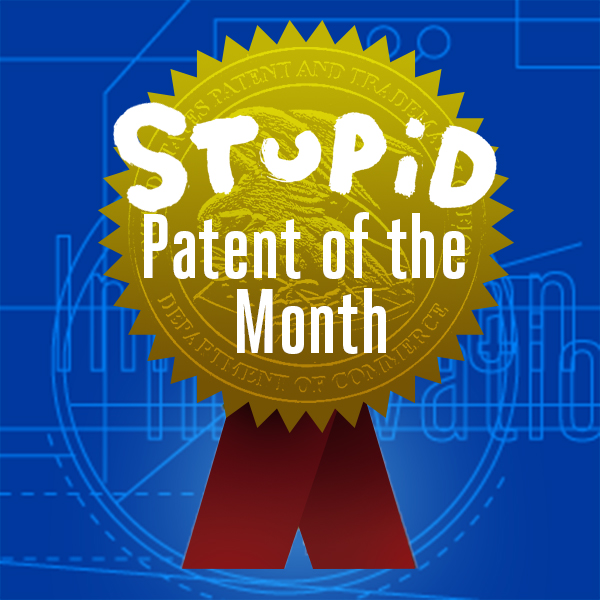 On July 25, 2017, the Patent Office issued a patent to HP on reminder messages. Someone needs to remind the Patent Office to look at the real world before issuing patents.
On July 25, 2017, the Patent Office issued a patent to HP on reminder messages. Someone needs to remind the Patent Office to look at the real world before issuing patents.
United States Patent No. 9,715,680 (the ’680 patent) is titled “Reminder messages.” While the patent application does suggest some minor tweaks to standard automated reminders, none of these supposed additions deserve patent protection.
Claim 1 of the patent states (comments in brackets):
A non-transitory computer-readable storage medium containing instructions, the instructions when executed by a processor causing the processor to [use a computer to]:
receive at a first computer system, via a network, event data descriptive of an event to occur at an event time [get event and time information];
receive via the network, reminder data descriptive of a reminder time to occur on or before the event time [get the reminder time];
at a time after receipt of the event data, receive via the network article data descriptive of an article to be associated with the event, the article data created during an electronic scanning operation [receive some additional information (created by scanning) relating to the event]; and
at the reminder time send via the network a reminder message describing the event and the article to a second computer system, for presentation at the second computer system [at the reminder time, send the reminder message].
Although this claim uses some obscure language (like “non-transitory computer-readable storage medium” and “article data”), it describes a quite mundane process. The “article data” is simply additional information associated with an event. For example, ‘buy a cake’ might be included with a birthday reminder. The patent also requires that this extra information be input via a “scanning operation” (e.g. scanning a QR code).
 The ’680 patent comes from an application filed in July 2012. It is supposed to represent a non-obvious advance on technology that existed before that date. Of course, reminder messages were standard many years before the application was filed. And just a few minutes of research reveals that QR codes were already used to encode information for reminder messages. For example, QRickit suggested using QR codes for calendar events and reminders (with the option of adding additional information beyond the event descriptor). This 2011 article suggests using QR codes to embed information such as “assignments for the week.” The only even arguable difference from the prior art is that the patent’s claims require the “article data” to be received after the event data. In our view, that is not a distinction that warrants the government-granted monopoly power inherent in a patent.
The ’680 patent comes from an application filed in July 2012. It is supposed to represent a non-obvious advance on technology that existed before that date. Of course, reminder messages were standard many years before the application was filed. And just a few minutes of research reveals that QR codes were already used to encode information for reminder messages. For example, QRickit suggested using QR codes for calendar events and reminders (with the option of adding additional information beyond the event descriptor). This 2011 article suggests using QR codes to embed information such as “assignments for the week.” The only even arguable difference from the prior art is that the patent’s claims require the “article data” to be received after the event data. In our view, that is not a distinction that warrants the government-granted monopoly power inherent in a patent.
The Patent Office reviewed HP’s application for years without ever considering any real-world products. Indeed, the examiner considered only patents and patent applications. We have complained before that the Patent Office seems to operate in an alternative universe where only patents provide evidence of the state of the art in software. The fact that the Patent Office doesn’t take developments in real software into account in its assessment of prior art speaks poorly for its ability to determine whether patent applications actually reflect new inventions.
In addition to failing to consider real products, the Patent Office gives little weight to common sense and takes an extremely rigid approach to evaluating whether or not a patent application is obvious. This leads to patents on things like taking photos against a white background, filming a yoga class, voting for a favorite photo, and out-of-office email. Much of the responsibility for this mess rests with the Federal Circuit, which has failed to apply a Supreme Court case called KSR v. Teleflex that calls for a flexible, common sense approach to obviousness. Together with Public Knowledge, EFF recently filed an amicus brief [PDF] asking the Supreme Court to consider the obviousness standard in patent law and to reaffirm that examiners can reject common sense combinations of known elements.
Even leaving obviousness aside, HP’s patent application still should have been rejected under Alice v. CLS Bank. In Alice, the Supreme Court ruled that an abstract idea does not become eligible for a patent simply by being implemented on a generic computer. As with many software patents, the patent goes out of its way to explain that its method can be implemented on a generic computer, or, as the patent puts it “generally any computer.” Despite this, the prosecution history [PDF] reveals that the examiner never even mentioned Alice, even in office actions written well after the Supreme Court’s decision came down. We have written many times (e.g. 1, 2, 3, and 4) to protest that the Patent Office is not doing enough to diligently apply the Alice decision. The ’680 patent provides yet another example of abstract software patents being issued despite the Supreme Court’s ruling.
In case you want to set a reminder, the ’680 patent will expire on December 16, 2035.







